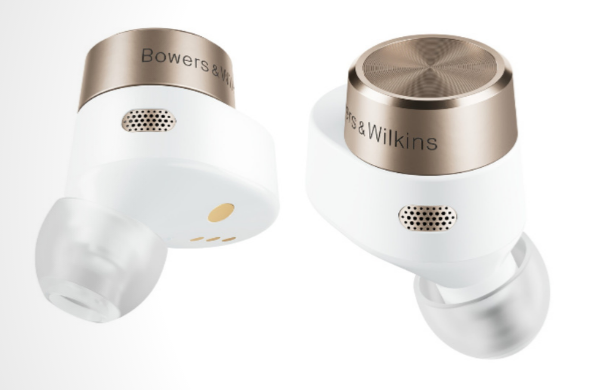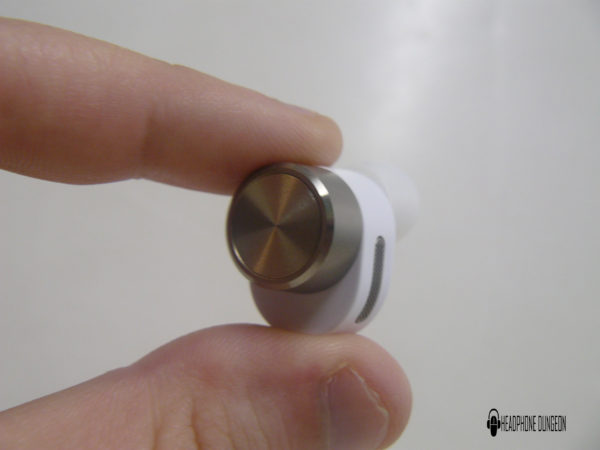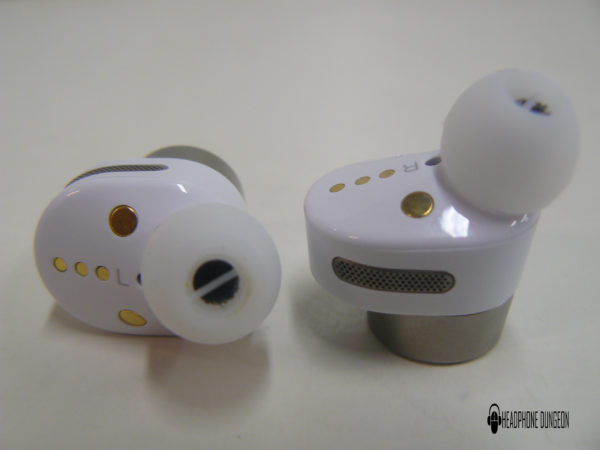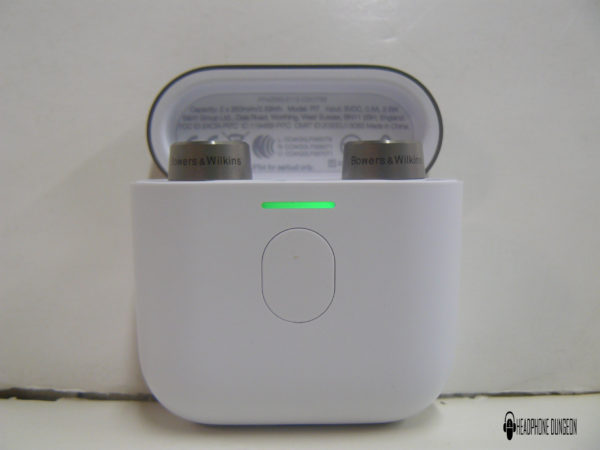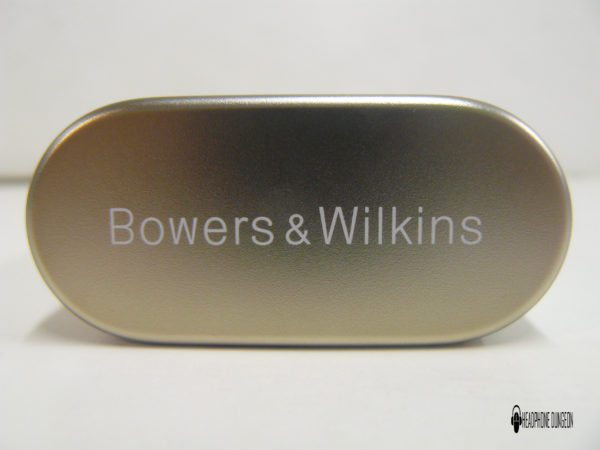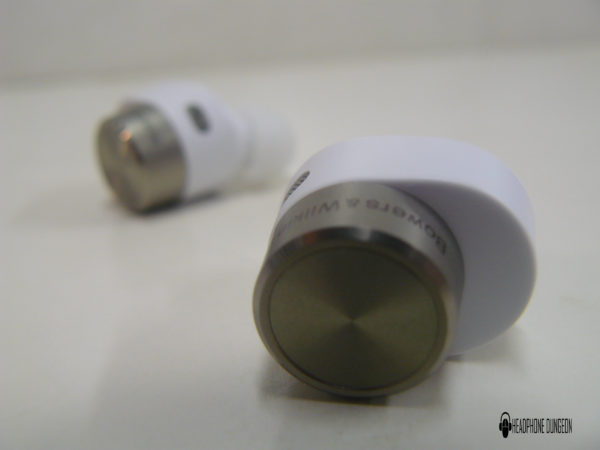I was excited when Bowers and Wilkins announced that they were releasing two brand new true wireless products. Their over-ear models impressed me with their classy design and ample bass response. When the PI5 and PI7 were announced I wondered if the sound I came to admire in the PX5 and 7 would translate. If you read my review for the PI5, you’ll know that I was quite surprised by the earphone’s more relaxed sound signature. I then came to admire the sound in a much different way than I was expecting. Is the PI7 going to be packed full of more surprises, or is it more in line with my original expectations?
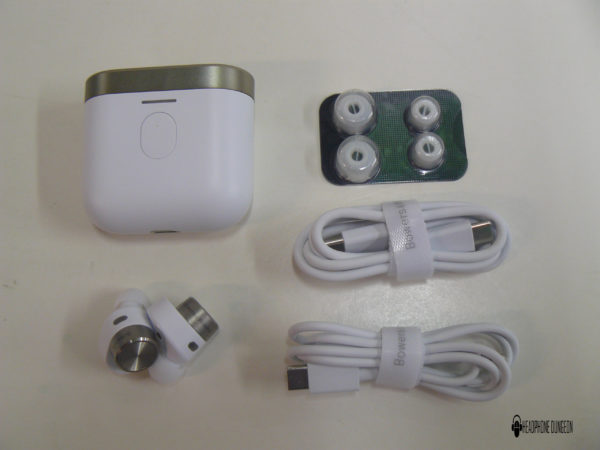
What You Get
- PI5 Headphones with ear tips (M)
- Charge Case
- USB-C Charging Cable
- Ear Tips (S/L)
- Literature Pack
Look and Feel
Bowers and Wilkins have gone with the same outer build for the PI7 that was seen on the PI5. It’s a sleek design that borrows a bit from the Sennheiser Momentum true wireless 2 design, but with its own sense of sophistication. The PI7 has this outer ridge jutting out of the main housing that brings that aesthetic flourish you’re expecting with Bowers and Wilkins. I used the white variation, but the charcoal coloring looks even better in my opinion. In terms of the fit, it’s basically the same as the PI5. If you’ve tried the PI5 already, or read the reviews, the PI7 is one of those Bluetooth earphones you have to twist slightly into your ear to get the right fit. However, twisting it too far can be rather painful, so getting the sweet spot becomes important to the level of comfort. Once the earphones feel like they’re in the right place, you can enjoy a respectable level of comfort and security that may as well make the shell invisible.
Design and Functionality
When I reviewed the PI5, I was impressed with its sizable driver unit. The PI7 goes even further, with an added balanced armature to its 9.2mm dynamic driver. With the balanced armature, you get a dedicated tweeter for high-frequency information, with the dynamic unit handling bass and mids. It is unorthodox for a true wireless earphone to be designed this way, but Bowers and Wilkins make it work. They also have four dedicated amplifiers that increase the power of the output signal, and when we get to the sound signature you’ll know what I mean.
As for its touch-sensitive functionality, the controls are simple and responsive. It gives you a consistent feedback beep and responds with little delay. The response is almost too sensitive, with even a single brush of my finger on the side of the earphone gives you a response. It’s not a huge problem but should be noted. If you’re like me and weren’t too crazy about the ANC on the PI5, it’s not much better here. Although there are more dedicated microphones, the noise-cancellation was still a bit weaker than I would have hoped. I could still hear a large amount of the environment, and while it wasn’t distracting it was notable for the advertised ANC.
Bluetooth
Like most wireless products released today, you can find Bluetooth 5.0 supported on the PI7. It uses a single aptX CODEC and a 24-bit streaming resolution for even more superior sound quality.
Battery Life
The battery life didn’t impress me much on the PI5 and looking at the specs of the PI7 I wasn’t expecting much better. With the PI7 you get 4 hours of playtime off a single charge, with a total of 20 hours with the charging case. Like the PI5, the PI7 only needs about 15 minutes of charge for two hours of playtime, which is a nice way to combat the short battery life, but it’s still not very convenient to have to keep charging them constantly.
Soundstage
I found the soundstage on the PI5 to be appreciable for a true wireless and the PI7 is mainly no different. The PI7 exudes moderate width and a clear, present image that strays from a linear sound field. They’re not exactly the most layered or articulate true wireless earphones I’ve heard but the effort here is noticeable enough to appreciate its level of clarity. The imaging here is very effective for a true wireless, accurately defining placement and positioning of pan information while keeping a solid tone.
Low End
To me, this is the highlight of the PI7. As the PI5 lacked a bit of energy in its bass, the PI7 more than makes up for it. The lows here are incredibly gripping, with a great amount of impact. They help lift your tracks and give them the energy they need to properly convey fullness. The best aspect of this bass is that it never feels like it’s bloating the mix in any way, but rather complementing it with a grand sense of scale. This gave a track like “Fortran Drift” by Ascendant a striking body that mainly affected the rumbling synth bass and provided texture to the songs’ main rhythm. It made the track feel more enticing than it would have even on the PI5.
Mids
While the low-end presence is considerably boosted, there’s something sacrificed in its midrange response. The timbre is partially v-shaped, with a more relaxed tonality compared to its lively bass. However, the more negative aspects of a v-shaped response aren’t very present here. Vocals don’t exactly pop, but still appear clear in the mix, with clean textures to boot. The instrumentations and effects contain a good amount of body but lack any impressive detail.
Highs
When the highs are as prominent and colorful as they are on the PI7, you know you’re in the proper v-shaped territory. The treble here is sweet, smooth, and tightly controlled. It only expresses the most easily digestible frequencies and avoids harsher characteristics like sibilance or brightness. The highs are colorful, well-textured, and create a nice finish to the overall timbre.
Summary
At $399 these are some of the priciest true wireless earphones out there, and with an option like the PI5 already on the table, is the PI7 worth it? Well if you’re a bass-head then absolutely! I don’t think there are a lot of true wireless earphones out here with a low end like this. For those who aren’t as detail-oriented listeners, and just want a wireless earphone with some solid bass, this is one of the best options you can get. Paired with the responsiveness of the controls, and the comfortable fit, I think it’s worth the hike in price. ANC and battery life might not be ideal, but in terms of pure resolution, it’s hard to beat.
Pros and Cons
Pros: Massive bass, Sweet highs, Responsive controls, Comfortable fit
Cons: Battery life
The Bowers and Wilkins PI7 is available at Audio 46.
Headphonedungeon may get a commission from retail offers.

